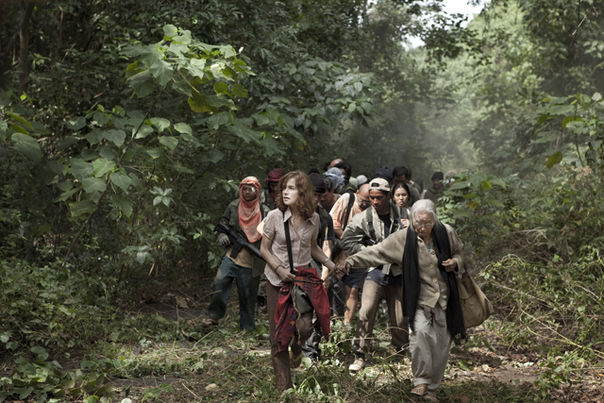Held CAPTIVE by Hyper-Real Hijack Flick
Brillante Mendoza's latest effort in the Berlinale Competition is a powerful depiction of a prolonged kidnapping.

Brillante Mendoza's CAPTIVE
CAPTIVE opens with a brutal abduction and ends in a tumultuous rescue, with the long ordeal of the hostages sandwiched in between. Based on an actual 2001 kidnapping of a group of Philippine resort guests by the Muslim Abu Sayyaf terrorists, Brillante Mendoza’s latest film aims at full experiential immersion. For most of its two-hour-plus screen time, the film remains remarkably unanchored in any individual’s story, even though the conspicuous casting of Isabelle Huppert may suggest a focus on her, a Christian social worker, as the humane center of the grueling vortex.
Mendoza is no stranger to ordeal flicks: his 2009 KINATAY was an allegedly insufferable exercise in prolonged scenes of hyper-real violence, and even his earlier work such as SLINGSHOT (2007) rubbed the viewers’ noses in the gutter of slum-based poverty and disenfranchisement. CAPTIVE, however, for all its extreme content, manages to strike an intermittently gentle tone. It’s one of Mendoza’s points that after the initial shock of abduction, a strange sense of symbiosis emerged between the hostages and the terrorists. “They’re just fighting for their homeland”, says one of the kidnapped women in a startling act of justifying her captors, who for the most part aren’t even depicted as particularly abusive. Mid-way through the film, it’s the military rescue units and their stray bullets that cause the actual dread.
Even if CAPTIVE is probably the director’s tamest work to date – with violent sequences rarely entering the realm of in-your-face garishness – there’s no denying that Mendoza has a sensationalist sensibility. The film is casually punctuated with mega close-ups of fighting scorpions, menacing snakes and all kind of nature-horror footage. It also happily indulges in such tabloid-tinged set-pieces as delivering a baby under fire and the group escaping a sudden hornet attack, with some generalizing overhead shots thrown in for good measure. Amazingly, it all amounts to a distinctive, Sam Fuller-like style, not concerned with niceties of characterizations as much as with giving the film a pungent, B-movie-like immediacy.
By refocusing his story in order to make the pivotal attacks of 9/11 seem like a mere background blip to the characters’ long trek, Mendoza makes a rather daring political choice. It remains in perfect sync with the movie’s general anti-Hollywood slant, best seen in its avoidance of the stock ransom-movie clichés that would milk the human interest factor. It’s too bad, then, that the last half-hour becomes a palpable slump of redundant scenes, of which the sudsy bonding between motherly Huppert and her 12-year-old abductor is only the most cloying. Mendoza succeeds in pulling us into the inferno of violence that in the end doesn’t seem that scalding or scarring.


301 Moved Permanently